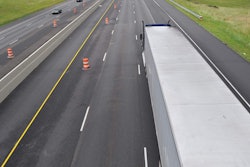Though the sweeping tax overhaul enacted in late December cuts taxes for big fleets structured as C Corporations, it also likely means annual tax savings for smaller trucking companies, too, by way of lower rates and a new — and significant — deduction for smaller trucking companies not structured as C Corporations.
Not only does the law cut tax rates, it implements a new 20 percent deduction on net business profits of so-called “pass-through entities” — companies structured as S Corporations, Limited Liability Corporations, Partnerships and Sole Proprietorships. That encompasses nearly all owner-operators, as well as many small and medium-sized carriers.
The deduction allows carriers structured as pass-through entities to lop 20 percent of their businesses’ net income for tax purposes, meaning they’ll only be taxed on 80 percent of their net profit. This change will take effect for the 2018 filing year, not for 2017 filings, which are due April 17.
What’s more, the law expands so-called bonus depreciation to purchases of used trucks and trailers. Prior tax law allowed bonus depreciation only for purchases of new equipment.
This equipment-buying incentive included in the Tax Cuts and Jobs Act, signed into law by President Trump on Dec. 22, allows carriers to deduct 100 percent of truck and trailer purchases, up to $1 million a year, until the end of 2022. Starting in 2023, the bonus depreciation deduction dwindles 20 percent a year until 2026. It is eliminated starting in 2027. The deduction also includes purchases of software and other business purchases.
The law does sunset the per diem deduction for company drivers, which allowed drivers to deduct $50.4 a day (80 percent of $63) for every day they worked away from home. However, said trucking tax expert Kevin Rutherford, carriers could choose to pay drivers a per diem as part of their pay package to help mitigate the removal of the per diem deduction. Under such a scenario, drivers earning 40 cents a mile, for example, could choose to take a base salary of 30 cents a mile and then have the remaining 10 cents be paid as a per diem rate. Those 10 cents per mile would not be subjected to income tax, social security or other payroll taxes.











